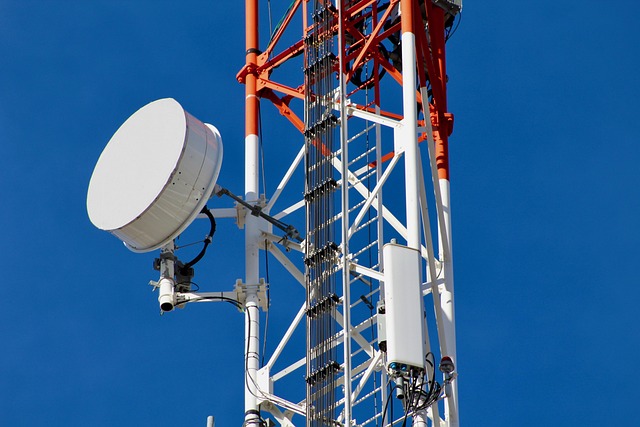Wireless Network Extenders enhance network coverage through low voltage cabling that amplifies and retransmits Wi-Fi signals, allowing devices to connect with faster speeds. This method offers flexible deployment, reduced costs, and simplified maintenance by integrating data and power transmission. Choosing suitable low voltage cabling like Cat6a or fiber optics minimizes signal loss over long distances, ideal for large facilities or outdoor spaces. Its discreet installation and scalability make it suitable for integrating access points into existing structures without major renovations.
In today’s digital era, extending network coverage is crucial for seamless connectivity. This article explores wireless access point cabling as a game-changer in enhancing network reach. We delve into understanding wireless network extenders and their pivotal role in bridging coverage gaps. Additionally, we highlight the benefits of low voltage cabling, offering advantages in cost, flexibility, and installation simplicity. Learn about strategic deployment approaches and discover how to choose the ideal cabling for your extended network needs.
Understanding Wireless Network Extenders and Their Role
Wireless Network Extenders, also known as range extenders or signal boosters, play a crucial role in expanding network coverage for homes and businesses. These devices are designed to improve Wi-Fi signals by amplifying and redistributing them over a larger area, effectively bridging the gap between access points and connected devices. By using low voltage cabling, these extenders can be discreetly integrated into existing infrastructure, ensuring seamless connectivity without compromising aesthetics or performance.
The primary function of a network extender is to receive the Wi-Fi signal from an access point, boost its strength, and then retransmit it at a higher power level. This process allows devices that were once out of range to connect and enjoy faster, more reliable internet speeds. Low voltage cabling facilitates this by providing a reliable and efficient means of transmitting data between the extender and the access point, ensuring minimal signal loss and maximum performance.
Benefits of Low Voltage Cabling for Access Points
Low voltage cabling for wireless access points offers several significant advantages in extending network coverage. Firstly, it allows for more flexible and efficient deployment by reducing the need for bulky power supplies and complex wiring. This flexibility enables IT professionals to strategically place access points in hard-to-reach or dense areas without worrying about power constraints.
Additionally, low voltage cabling contributes to cost savings and simplifies maintenance. By using a single cable for both data and power transmission, the overall infrastructure requirement is minimized, leading to reduced installation and operational costs. This streamlined approach also makes troubleshooting easier, as there are fewer components to consider, ultimately enhancing network management and reliability.
Choosing the Right Cabling for Extended Coverage
When designing a network with extended coverage, selecting the appropriate cabling is paramount. Low voltage cabling offers a versatile and efficient solution for wireless access point (WAP) deployments. This type of cabling provides a cost-effective way to extend network reach while maintaining high performance. By using low voltage cables, such as Cat6a or fiber optics, you ensure minimal signal loss over long distances, ensuring consistent connectivity.
The choice of cabling depends on various factors, including the size of the area to be covered and the desired speed and bandwidth requirements. For instance, in large industrial facilities or outdoor spaces, low voltage cabling’s ability to transmit data without significant attenuation becomes invaluable. Its flexibility allows for easy installation in challenging environments, making it a preferred option for expanding network coverage seamlessly.
Deployment Strategies for Seamless Network Integration
The deployment strategies for wireless access point (WAP) cabling in extended network coverage involve a careful balance between infrastructure and integration. One effective approach is to utilize low voltage cabling, which allows for discreet and efficient installation while maintaining optimal network performance. By employing this technology, organizations can seamlessly integrate WAPs into existing structures without the need for extensive physical modifications.
Low voltage cabling systems provide a scalable and flexible solution, enabling the easy expansion or reconfiguration of network coverage areas. This is particularly beneficial in large facilities where network reach needs to be tailored to specific zones or departments. With carefully planned routing and connectivity, these cabling strategies ensure that wireless signals are distributed evenly, resulting in a robust and reliable network infrastructure for all users.
In conclusion, extending network coverage through wireless access point cabling offers significant advantages, particularly with the adoption of low voltage cabling. By understanding the role of network extenders and selecting the appropriate cabling infrastructure, organizations can seamlessly integrate powerful yet discreet network solutions. This approach ensures improved connectivity, enhances user experience, and paves the way for future-proof networking, all while leveraging the benefits of low voltage cabling for efficient and cost-effective deployments.
